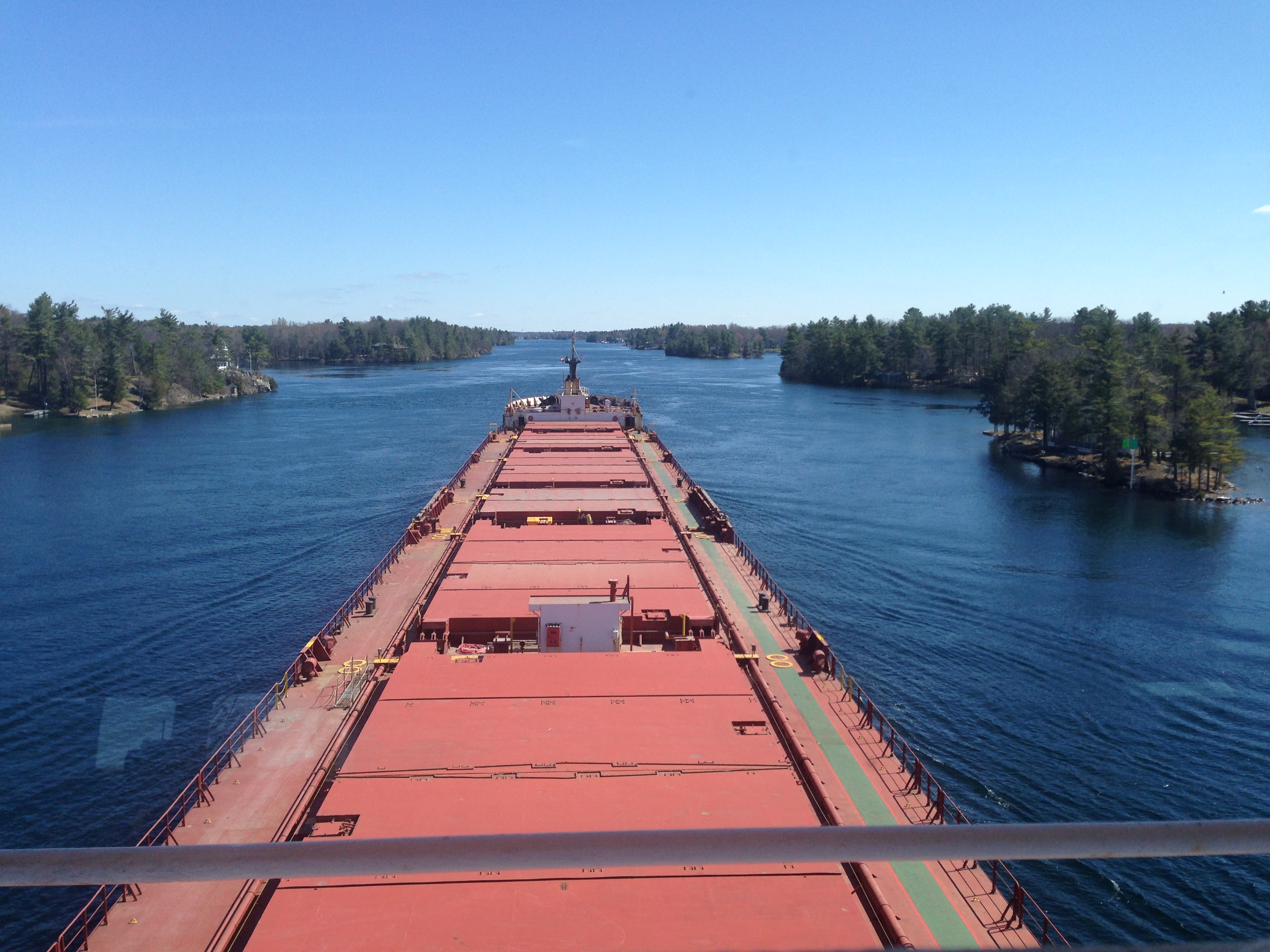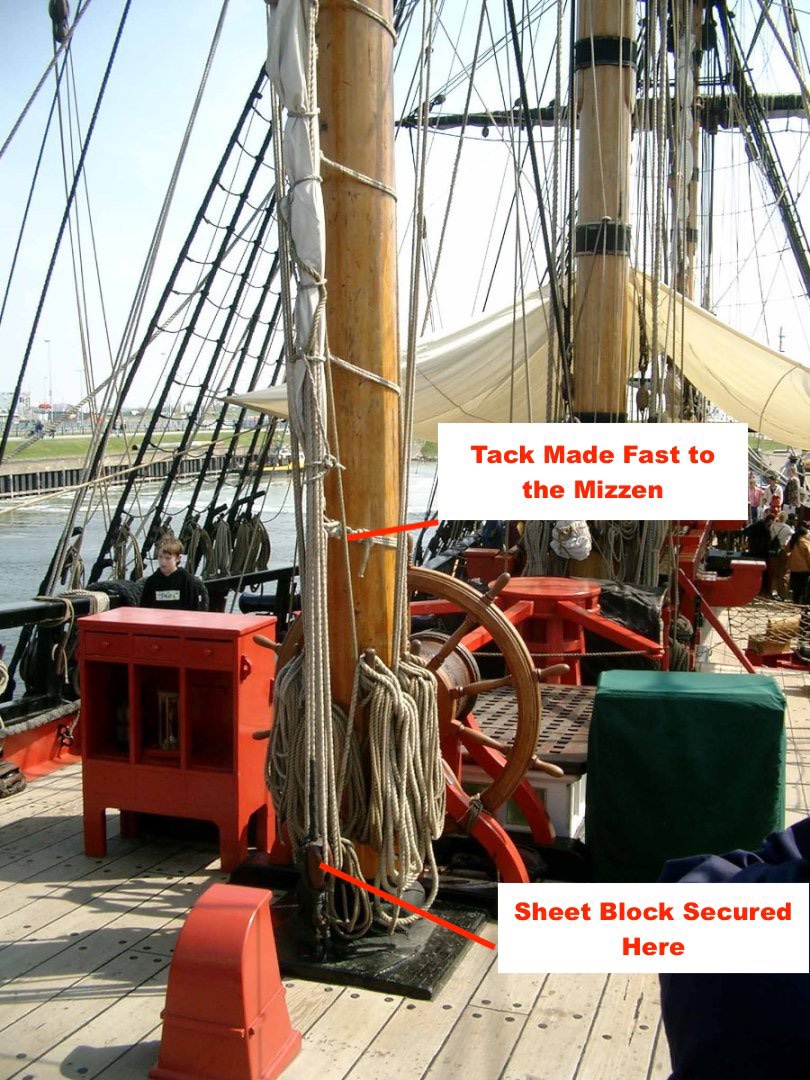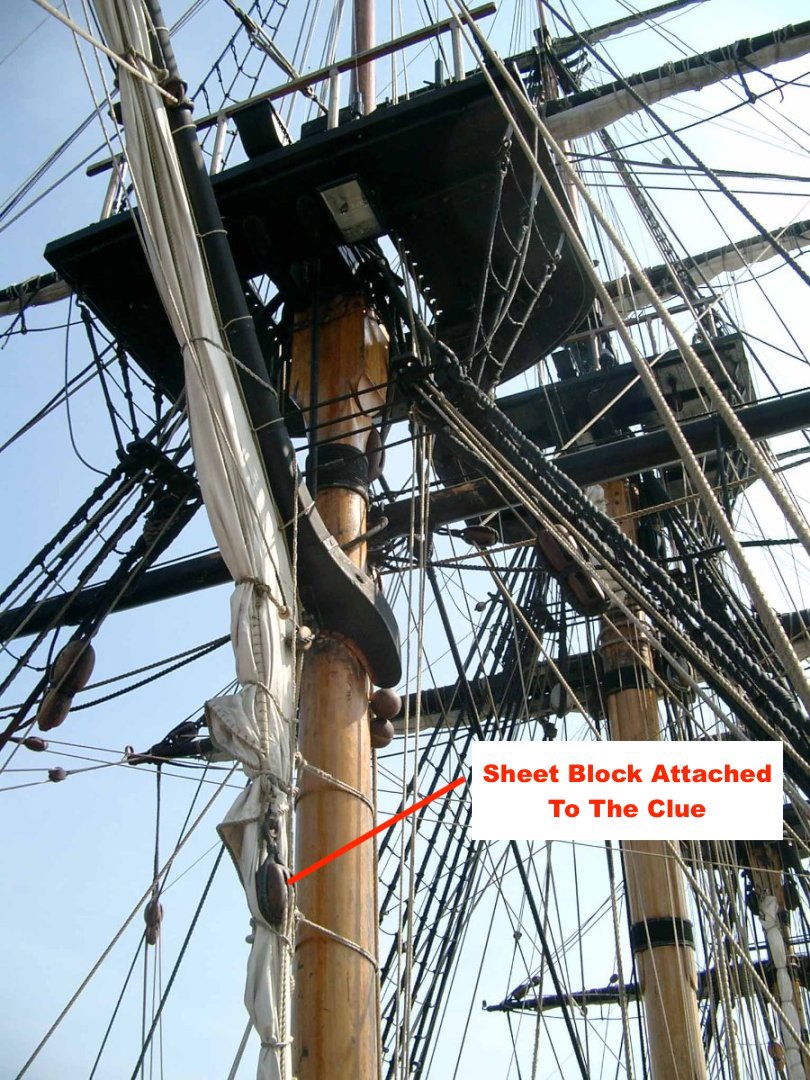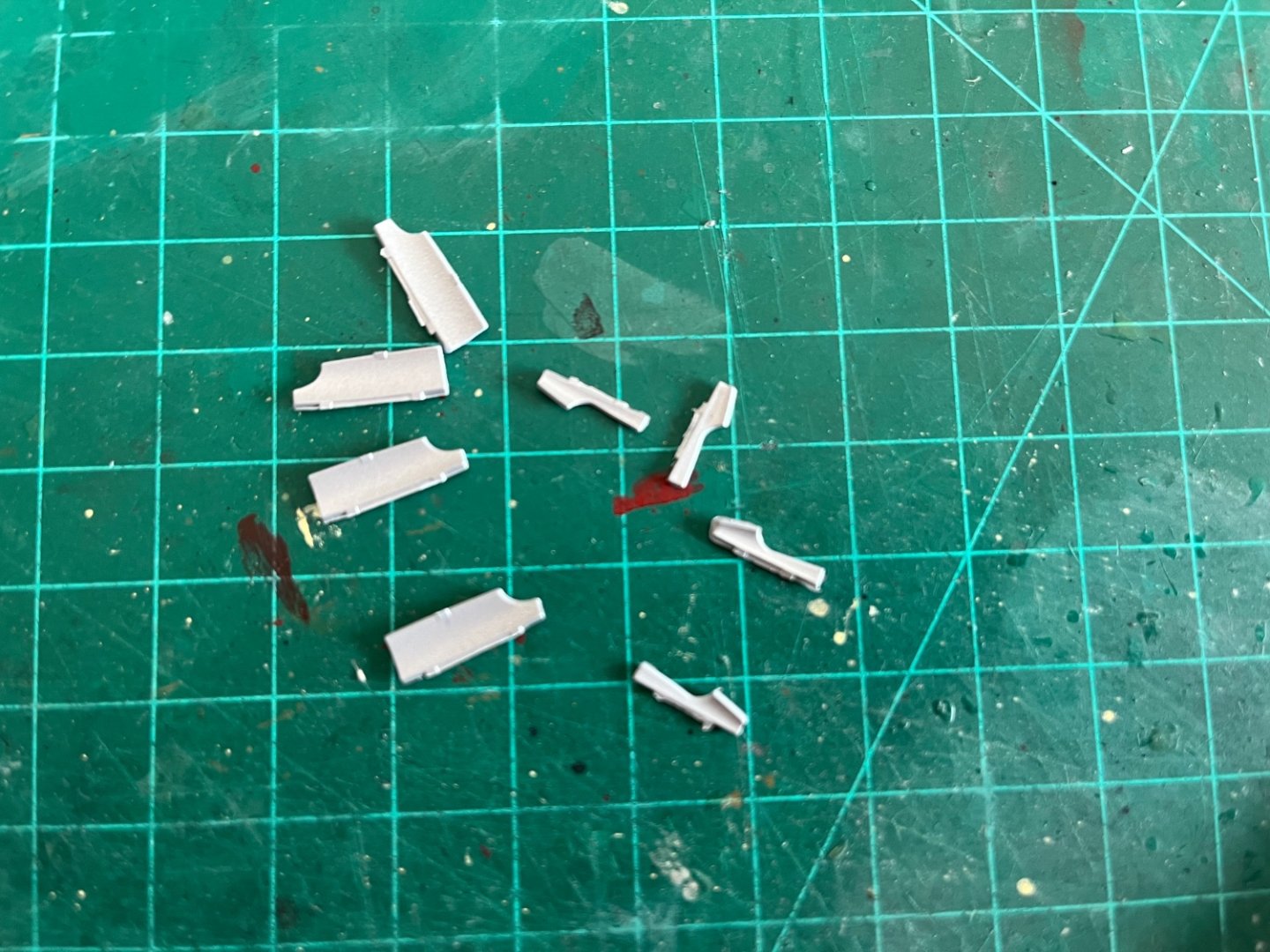-
Posts
3,263 -
Joined
-
Last visited
Content Type
Profiles
Forums
Gallery
Events
Everything posted by realworkingsailor
-
I only wish I had the chance to get a picture of the trench I made. Or even better, had someone catch me on video. I really would have liked to see it unfold from an outside perspective. So many times we do these spectacular “stunts”, but like the “record sized” fish that got away, no picture, no proof! 😜 Andy
-
Soooo…. kind of a good news bad news update. First off, the bad news. I will start by allaying everyone’s fears, no models were harmed in the performance of this particular dumb human trick. I was out skiing yesterday, getting in some nice runs in, enjoying the sunshine and fresh air. The club was making the most of the cool weather to make snow. Shortly after lunch I was skiing down one of these particular runs where snowmaking was in progress (run was still open). To avoid getting hit full on with a blast of spray, I’d aimed for a spot close to the base of the snow gun, that looked clear. Well, as I was traversing this area, my skis abruptly stopped in the freshly blown crud, but made no prior mention of it to me, so I kept going. It felt like I was hurled into the “snow” onto my left shoulder. I plowed a pretty deep furrow in the hill (probably the only thing that stopped me digging any deeper was my head). The end result is I now have a broken collarbone. I have an appointment on Friday at the fracture clinic to see if I stay in the sling or get surgery to pin me back together. When my fall occurred I was in sight of the ski patrol station and they’d seen it happen. They also complimented me on the size of the crater I left in the hill. I was always told, if you’re going to do something, do it right, no half measures. 😁 On a lighter note, I also received a confirmation email yesterday that the decals I ordered have been shipped. So silver linings. Andy
-
So I’ve ordered some replacement decals this morning. I decided to skip Airfix altogether and try something aftermarket. Thanks to @Egilman for the advice on what’s out there, I opted for an Xtradecal set. Initially I looked to order them directly from Hannants, but the price for shipping a $10 envelope of decals was over $15. I “noped” out of that option. A little bit of digging and I found the same set available from a company called Thunderbird Models. They’re a small operation somewhere up in Saskatchewan. They have some interesting products if you’re into bush planes and the like. Anyway, their shipping was a much more reasonable $2.50. Fingers crossed my order will be shipped soon and Canada Post will deliver. Andy PS: All prices above in Canadian dollars. 😁
-
I tried that trick, it had vacuumed itself shut, and the film seemed too thin to risk trying to even gently tease it apart. I’ll see what Airfix has to say on Monday, and then I’ll go hunting for aftermarket replacements. The worst I ever experienced was a bad set from Black Cat Publishing. The film was so thin it just shattered. Andy
-
Well, things have just come to an unexpected pause…. Speed bump… pothole… something… I was starting on the lettering, following my usual (well proven) procedure for applying any kind of decal. I decided to start with the registration number, as the next fuselage side decals take their relative positions from the number. Just as I’m sliding the decal gently off the carrier sheet, into a dab of micro set, the whole decal balls up into a Gordian knot…. What happened next is not permitted to be printed here🤬. Looks like I’ll have to chase down Airfix for a replacement lettering set. Nuts…. Well, back to the bomber 🙄 Andy
-
Not necessarily, while that’s certainly the more common convention, the bar could also be placed aft. See the table on document page 3: https://msi.nga.mil/api/publications/download?key=16920950/SFH00000/HoMCA.pdf&type=view If you look at the far right top block concerning the Flinders bar, the adjustment and effect are given for both a forward, or an aft mounted bar. Remember this is also still the period of experimentation in the adjustment of compasses. Kelvin hadn’t even been born at this time (he’s the one responsible for the invention of the spheres seen beside more modern ship’s compasses), so I highly doubt that the position of the correction magnets or bars had been settled at this time. Andy
-
If you don’t mind me chiming in here (amazing build, BTW), I believe you are most likely correct that the device is some form of compass correction. Flinders wrote his paper on compasses and magnetism around 1805, so it’s quite possible that a Flinders bar, or some similar device was in regular use at the time of your Creole. There are many facets to the errors that can be found in a magnetic compass, not solely the iron present in the ship (of which, the ordinance is more than enough to induce an error). Other factors like drastic changes in latitude, or the nature of the cargo carried can also cause errors. Andy
-
As always, thanks everyone for the comments and "likes". The last couple of days have been spent on painting. Mostly things went well, my only real issue came with my first attempt at the green camo bands. I had made them a little too skinny, almost anorexic. So I had to take a big risk and re-mask everything and make the green bands a little healthier. Luckily things worked out, excepting a few very minor areas in need of some touch up. I wish I could post some better photos, I don't have any really decent photography lights and the ambient light sucks right now (we've had nothing but thick dull overcast skies for almost a week straight, with no signs of it changing any time soon). Overall, I'm pleased with the outcome. I opted to use the lighter shade of RAF green (as opposed to the shade I used on my Wellington build). I thought it better represented a day fighter and it compares favourably with the grey/green underside. Next up after some touch ups and a layer of gloss will be the lettering. Hopefully there will be some sunshine by then. Andy
-
Thanks, everyone, for the likes. Always appreciated! So before I knew what was what, painting had started. The gap filling was not too excessive, and didn't take much time at all. I was too distracted by my progress I didn't take any pictures of the underside. Oops! You'll all have to wait for the reveal 😁. I did remember to snap a few quick picks after I'd masked off the underside: I figured I would challenge myself to make the canopy masks, rather than hunting for an aftermarket masking set. Seeing as it is a relatively simple canopy, it was far more economical to do it this way, and good practice for any future builds too! Just regular Tamiya masking tape, a fresh #11 blade and some patience (and a lack of the red leaky stuff that can emanate from one's fingers if one is not careful with the #11). I am pleased with the results. Prior to being glued in place, I gave the canopy a quick coat of Testors gloss to seal the tape edges. This should mitigate any paint bleed. Once the canopy glue has set, it will be back to painting. Andy
-
If nothing else, this build moves along pretty quickly. I left off yesterday about to finish the cockpit. Well, that didn't take too much of my time. All done. Very simple after all the complex fiddling about that I did building the Wellington. The seatbelts fit not too badly, and add a little touch of extra detail. The instrument panel was a basic decal. The heavy white lines actually make it slightly more visible (in a much smaller space) than the layered PE of my Wellington. A quick dry fit to make sure all the components will slide together nicely. I only had to tuck the ends of the seatbelt a little further under the seat to avoid them getting pushed up above the seat pan. For the most part I painted the interior green with aluminium components and gun-metal highlights on the details and various struts and whatnot. After the cockpit, things move swiftly and before long there was something that looked like an airplane. For the most part the fit was okay, but there are a few small seams that will need addressing with some filler. The after part of the wing/fuselage transition has the most obvious gap, but there are some small ones along the horizontal stabilizers and one the left side of the tail fin. There's also a bit of a lip on the chin of the plane, where the wing assembly meets the fuselage, that will need some sanding and maybe a little filler to smooth out the transition. I don't expect too much trouble dealing with these little areas. Andy
-
Time to get stuck into it, or, what to do on a gloomy January day (it's been cloudy and wet and just generally bleh weather since the weekend, good hobbying weather!) The build starts simply enough with building the landing gear bay in the lower wing: Nothing too complicated, but reasonably detailed for this scale. I pre-painted the parts in aluminium before assembly. This was quickly followed by adding the upper wing surface: A little bit of a seam remains to be addressed, but otherwise the parts went together rather well. No alignment issues to speak of. After the glue had set, I then drilled out the "gun ports". To me, the little moulded dimples lacked appropriate depth, and look much more realistic having been opened up. Moving along, the next step involves adding the cockpit foot plate, rudder pedals and control column: I will continue to take some liberties with the suggested paint scheme. Mostly to show as much of the details as possible. The cockpit is fairly small and once enclosed some things will likely not be seen anyway, but I thought I should do my best to make it possible that these details are not entirely lost in a monochromatic darkness. Work has not turned to the aft bulkhead and pilot's seat: I've opted for the armoured bulkhead, there's a little more detail on it (for the sake of interest) and I will be adding some PE seatbelts. Fortuitously, I had some PE leftover from my Wellington build, and while these belts might not be 100% correct for a fighter plane, they should do the job. I actually have two entire frets left over, as I had mis-interpreted what was included in each set when I ordered them, and Eduard mis-interpreted the number "1" when packaging this particular set. Happy accidents! I am really enjoying this build so far, it's a nice little kit and well worth it. Andy
-
If I’m not mistaken, many of us are approaching that milestone on this particular iteration of the forum. I believe the ten year anniversary of the “Great Crash” is coming up in February. I was a member here for a couple of years before that historic event. I wonder if @James H will be throwing a party to celebrate? 😁 Andy
-
Every hobby paint manufacturer seems to have a different name for the colour. Beige-grey, green-grey, off-sky… (okay I made that last one up, but it sounds good… like “off-white”). A lot of people forget that while the Spits get all the glory, the Hurricanes were responsible for 60% of enemy aircraft lost during the battle. Andy
-
Not saying it doesn’t have its place, just not for me 😁. I’ve done one airplane with the camo-over-black, I want to do something different. Actually, I don’t mind the scheme from the first release of this kit, a pre-war black and white with silver down the middle: But in my kit there are no decals for the large registration numbers under the wings, so it wouldn’t look right…. Andy
-
Happy New Year Everybody! OK, so I couldn't wait any longer. Especially since the paint I had ordered, mostly to finish my Wellington, arrived yesterday. For some reason the post office was being extra efficient. Never would have thought they'd deliver on a weekend, but I'm not complaining! For those not following along with my other airplane build, I picked up this little kit back in the beginning of December. The kit depicts an early Mk 1 Hawker Hurricane that was deployed to France in the spring of 1939. For a more complete history of the aircraft type, click here. The kit has the fabric wings, two bladed propellor and lacks the armour plating behind the pilot, that are the hallmarks of this sub-variant. It does, however, feature the spin recovery strake that was fitted at the bottom of the tail. This modification was made early in Hurricane production as spin recovery proved to be an issue with the aircraft as designed. Conveniently, Airfix provides plenty of extra parts in the kit, like the later three bladed propellor as well as the cockpit armour plating etc. Although I intend to build this kit mostly out of the box, I will take a few liberties in fitting out the plane using these extra parts, to suit my taste. Historical accuracy can get stuffed! My main preference is for the three bladed propellor (the two bladed prop is too "biplane" like for my taste), as well I will be using the armour plating in the cockpit. I am also not keen on the early black and white paint scheme on the underside, and I will opt for the sky grey-beige-green (whatever that colour is) underside. There's no real way around this, but for what it's worth, it's a cute little kit. There are five (small) sprues moulded in the usual grey plastic, as well as a small sprue in clear for the windscreen (both armoured and unarmored, although I'm hard pressed to tell them apart) and canopy. The moulding looks clean and crisp with minimal flash or other imperfections. The decals look reasonable, although being from Cartograf, the film will be a little thicker. While this does make the decal more robust, it can hinder it from settling down in higher relief areas. All in all, this should be a fun, quick(ish) little project (the biggest hold-ups being waiting for paint to dry). The nice thing is, while I'm waiting, there's a Wellington that needs finishing! Andy
-
If you could get the figures to look right, I think they would be a nice addition to your barge. But is it just me, or do the screenshot sample figures you posted look vaguely like “The Who”? Andy
- 106 replies
-
- Admirals Barge
- Vanguard Models
-
(and 1 more)
Tagged with:
-

gaff without a driver boom
realworkingsailor replied to DaveBaxt's topic in Masting, rigging and sails
HI Dave, I think this may help,. I think you've got the sheet and tack confused. If you don't mind, I've annotated your first two photos, hopefully they help clarify things a bit for you: In the first photo, the sail is brailed up and what you seemed to think was the tack, is intact the sheet block. In the second photo, the tack of the sail does not move when brailed up. It would be located somewhere in the vicinity of the lowest lashing on the mast. There may be a small tackle or downhaul lashing obscured behind the fall of the brails and the sheet. The other sheet block has been brought forward and secured to an eye at the mast partners, and the sheet haul taught and secured to a free cleat on the mast. Hopefully that helps you. Andy -
Thanks everyone for the “likes”! I’ve been thinking about the landing gear doors. As I alluded to earlier, I’m not entirely satisfied with the Eduard replacement parts. I think I’m going to follow my own advice. Luckily I don’t throw out anything, especially “spare” parts: It’s always a challenge, especially with that little gremlin who loves to gobble up small parts, especially the ones that fly off in all directions (or roll off the work bench), but I’ve got all the original parts. I will definitely lose the fine cross section of the brass PE parts, but I think it’s a fair trade for more securely attached parts, as well as ones that will actually appear to fill the openings. Andy
-
As always, thanks to everyone for their generously kind comments and continued "likes"! Not being a regular airplane model guy, it's reassuring to know I am at least doing this model a modicum of justice! I have been intermittently busy these last few days, of course the pre-Christmas craziness does tend to interfere with model building. I've been slowly picking away at the landing gear doors. It has been an interesting challenge and I'm not totally sold that the Eduard parts are as good an upgrade as they could have been. There are a couple of issues, the first being the mounting isn't the strongest; a tiny tab on an thin flexible strip to hold the doors. Secondly, the instructions once again are not as clear as they could be. An interpreter of Egyptian hieroglyphics has an easier job of it. Eduard could at least add one or two detail shots to indicate that the little metal tab sits in an almost invisible tiny slot, and also clear up exactly how the annoying little strip is actually supposed to be glued to the underside of the nacelle. Finally, once again, someone didn't read the tape measure correctly, and the Eduard doors are too short to completely cover the landing gear bay opening. It's not too noticeable, if you didn't look too closely, but as the building, I know it's there. Were I to do this model again, I would be more inclined to keep the kit supplied main landing gear doors and use some of the Eduard parts, specifically the interior framing to, up the detail level. Oddly enough, there were no issues with the tail gear doors. But there again, just three little tabs to hold each door in place. The last major components to be assembled are the bomb bay and bomb bay doors. This has kind of brought the build full circle, as these were some of the very first parts I assembled way back when, and carefully stored away for when the time was right. The bomb beams were slotted into place perfectly after the cases for the buoyancy bags were installed. I had hoped to have things wrapped up by Christmas, but I have run into another of those annoying snags. This time, I've run out of aluminium paint. *sigh*. Not sure why that is, as there really wasn't a lot of the plane that colour (compared to the amount of black, brown and green paint I used). As usual, supplies have run out when I was in the middle of painting the bomb bay doors. Looks like I will have to put in another order for supplies, but I won't be doing that until after Christmas. Too much going on and I need to spread the holiday bills out a little bit! 🤪 Andy
About us
Modelshipworld - Advancing Ship Modeling through Research
SSL Secured
Your security is important for us so this Website is SSL-Secured
NRG Mailing Address
Nautical Research Guild
237 South Lincoln Street
Westmont IL, 60559-1917
Model Ship World ® and the MSW logo are Registered Trademarks, and belong to the Nautical Research Guild (United States Patent and Trademark Office: No. 6,929,264 & No. 6,929,274, registered Dec. 20, 2022)
Helpful Links
About the NRG
If you enjoy building ship models that are historically accurate as well as beautiful, then The Nautical Research Guild (NRG) is just right for you.
The Guild is a non-profit educational organization whose mission is to “Advance Ship Modeling Through Research”. We provide support to our members in their efforts to raise the quality of their model ships.
The Nautical Research Guild has published our world-renowned quarterly magazine, The Nautical Research Journal, since 1955. The pages of the Journal are full of articles by accomplished ship modelers who show you how they create those exquisite details on their models, and by maritime historians who show you the correct details to build. The Journal is available in both print and digital editions. Go to the NRG web site (www.thenrg.org) to download a complimentary digital copy of the Journal. The NRG also publishes plan sets, books and compilations of back issues of the Journal and the former Ships in Scale and Model Ship Builder magazines.










